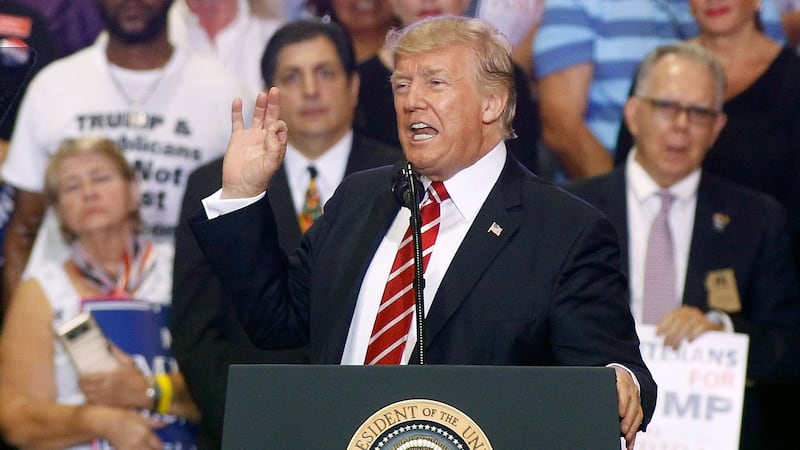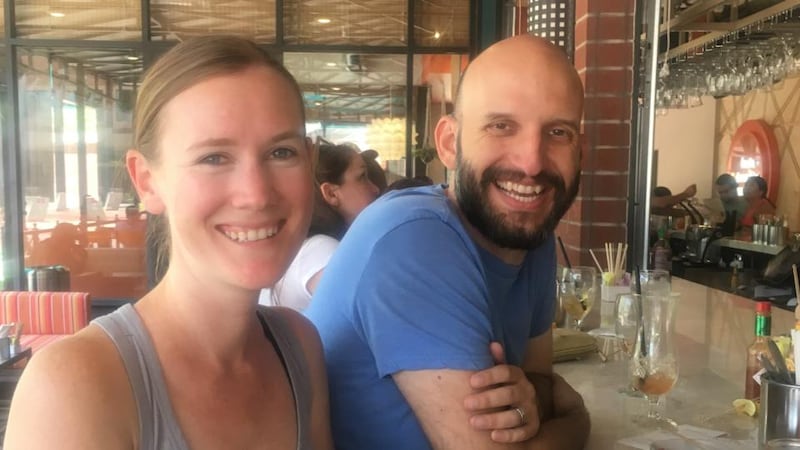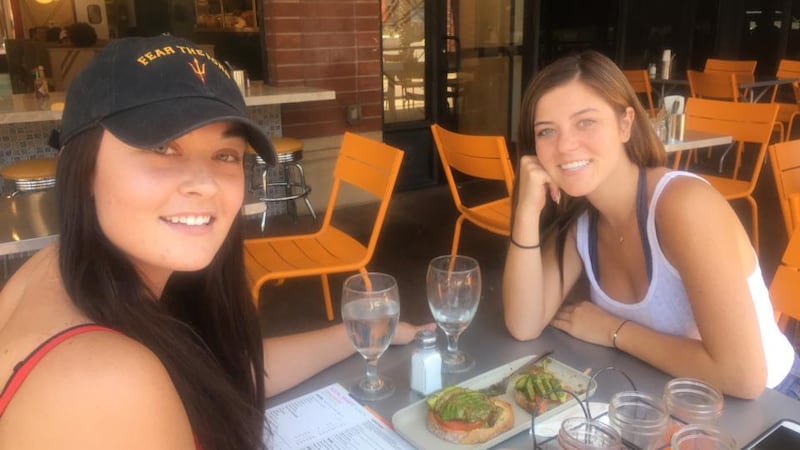It's lunchtime at the Morning Squeeze restaurant in Tempe, just outside Phoenix, and business is booming. With temperatures touching 40 degrees in the shade, diners are soaking up the sprays of moisture tumbling down from the mist machines on the ceiling. As at most restaurants in this fast-developing part of Arizona, queues are out at the door as customers line up for tables.
Phoenix is the United States’ second-fastest-growing city. Maricopa County, in which it sits, is the fourth most populous county in the country. Last year Arizona’s capital passed Philadelphia in size.
The residents who have flocked to the region over the past decade cross all social and political divides: wealthy east-coast snowbirds who chose Arizona’s desert climate for their retirement, in part because of the state’s favourable tax regime; young professionals and families lured by the tech and manufacturing industries, often swapping the high cost of living in neighbouring California for the cheaper lifestyle; and the continuing stream of Latino immigrants who have settled in a city just 2½ hours’ drive from the Mexican border.
About 30 per cent of Arizona's seven million people are Hispanic. The vast majority vote Democratic, adding a political dimension to the raging immigration debate
This year Arizona finds itself at the centre of the national stage. In November American voters will go to the polls in one of the most closely watched elections in history. The midterms on November 6th will be the first real electoral test of the Trump presidency, an indication of the mood of the country as Democrats mount a challenge to Republican control of both houses of the United States Congress.
Political analysts believe that Arizona – along with neighbouring Nevada – may hold the key to the outcome. The state has emerged as a crucial battleground ahead of the election. The sixth-largest state of the union, sitting between California and New Mexico in the southwest of the country, has long been eyed by Democrats as a potential swing state.
Though traditionally Republican territory, Arizona has been leaning left in recent years, as its make-up has shifted. Four of the state’s nine members of the House of Representatives are Democrats. Its two Republican senators, Jeff Flake and John McCain, have both stood up to Donald Trump, seeking perhaps to show their moderate credentials in an increasingly progressive state.
A special election in Arizona’s eighth congressional district in April gave an early hint of local political sentiment. Although the Republican candidate, Debbie Lesko, won the seat, Democrats performed better than had been expected in an intensely Republican constituency. Democratic strategists hope to replicate the trend across Arizona – and the country – this autumn.
In many ways Arizona represents the changing face of the United States. Its evolving demographics present a challenge to Republican hegemony in the state. As the percentage of Latino residents grows, so too does Democratic support. About 30 per cent of Arizona’s seven million people are Hispanic; many live south of Phoenix, around the state’s second-biggest city, Tucson. The vast majority vote Democratic (although not all are on the electoral register). This gives an added political dimension to the debate raging in the US about immigration; the Trump administration’s attempts to contain Hispanic immigration may not only reflect insular nativism but also be an attempt to secure a Republican majority that is under real threat if current population trends continue.
Despite the optimism in the Democratic Party, however, there are signs that the expected blue wave may not be quite as decisive as many hope. The mathematics of November’s elections are stacked against Democrats. Under the biennial midterm election system, all 435 seats in the House of Representatives are in play, along with just over a third of the United States Senate’s 100 seats. Of the 35 seats up for grabs, Democrats are defending 10 seats in states that Trump won – a significant challenge. But the party is targeting at least three or four vulnerable Republican seats, in Arizona, Nevada, Tennessee and even Texas, where the Democratic candidate Beto O’Rourke is performing well in polls.
Democrats have a better chance of winning back control of the House of Representatives. It needs to flip 24 seats while keeping the 194 it already holds. With a record number of incumbent Republicans not contesting the November election – perhaps indicative of a fear of a wipe-out, particularly in suburban areas where Trump is unpopular – Democrats’ chances of victory look strong.
The party’s hopes have been boosted by strong showings in a rake of special elections since 2016. A Democratic newcomer, Conor Lamb, for example, was elected in Pennsylvania this year in a district that Trump won by nearly 20 percentage points in 2016. Similarly, Jon Ossoff performed strongly in an election in the sixth congressional district of Georgia, an area of Atlanta that has traditionally voted Republican.

Democrats also appear to be winning the fundraising war. US Federal Election Commission filings show that Democrats outspent Republicans in the first three months of this year, with vulnerable Republicans in house seats facing much better-resourced opponents.
But despite Democratic optimism – and the fact that the party in power traditionally underperforms in midterm elections – there are signs that Republicans may do better than expected. A poll this week put Trump’s approval rating at 90 per cent among Republicans. Although he still is polling at a record low among Democrats and the public at large – his overall ratings dipped from 45 per cent to 41 per cent, evidently as a result of the family-separation policy at the border with Mexico – 55 per cent of Americans approved of his handling of the North Korea issue, up from 42 per cent in March and 34 per cent last October; the strong US economy has also won him support.
Eighteen months into his presidency, Trump remains as popular as ever among his supporters, his power to shock diminishing with each tweet. Polls also suggest that his constant attack on the special-counsel investigation led by Robert Mueller as a witch-hunt is beginning to resonate. Recent polls have shown a dip in public confidence in Mueller’s investigation of Russian meddling in the election that brought Trump to office.
The president’s survival – notwithstanding the serious findings against him that could emerge from the investigation, and ultimately lead to his impeachment – has taken mainstream Republicans by surprise.
Although many members of the Republican establishment grappled with something of an existential crisis following Trump’s election – how to respond to a man whom few supported as a candidate, and who appeared to represent the worst of Republicanism? – most have stepped into line. Only senators who are not seeking re-election, such as Jeff Flake and, in Tennessee, Bob Corker, have seriously challenged the president and called him out on his more egregious policies.
Trump's popularity with his base, despite the caution of establishment Republicans, is playing into the dynamics of the midterm elections
In the early months of the presidency the threat of a battle between mainstream Republicanism and the new firebrand, nativist politics embodied by the 45th president threatened to tear the party apart. But as he settles into the second year of his presidency the reality that Trumpism has become the new Republicanism is now a real prospect.
Trump’s popularity with his base, despite the caution of establishment Republicans such as Mitch McConnell, the senate majority leader, is playing into the dynamics of the midterm elections, which are now only 123 days away.
As immigration controversies have raged in recent weeks, Trump criss-crossed the country for rallies in support of Republican candidates – a sign, perhaps, of the power the party believe he holds in getting out the vote.
After a trip to Las Vegas to raise support for the Nevada senator Dean Heller last weekend, he flew to South Carolina to campaign for Governor Henry McMaster. A trip to North Dakota followed, and from there he travelled to Wisconsin to visit a Foxconn factory.
This was Trump returning to his political roots – revelling in the campaign rhetoric of the rally and away from the politics of the swamp as he led chants of “Lock her up”. But whether it will resonate beyond his core base and into the swing districts and suburbs that could determine November’s electoral map remains to be seen.


Here in Phoenix, people are divided on Trump. Local residents Travis and Cassie Lobert are not fans. "I don't share any of the values he stands for," says Cassie, a teacher.
Like many teachers in the area she participated in a statewide protest earlier this year, an experience that has energised her politically. She voted for Hillary Clinton in 2016 and plans to vote in the midterm elections. “In particular, I’m interested in the elections at state level, having seen how much power the state wields over areas like education.”
Travis, her husband, who is also originally from Phoenix, works in the airline industry. Although he doesn’t like Trump he didn’t vote in the 2016 election, as he was not impressed by either candidate. Will Trump’s presidency encourage him to vote in the midterms? “Maybe,” he says. “It will depend on the candidate.”
But other diners have different opinions. Kristy and Tyler, two 21-year-old Trump supporters, are having lunch on the terrace. Kristy is working with the Republican senate candidate Kelli Ward, and has strong opinions about the president.
“I think his economic record and his foreign policy record speak for themselves. Look at what he has done with North Korea. He has promoted the idea of peace through strength, which most people around the world want from the United States.”
“I think he will go down in history as the greatest US president,” Tyler says. She points to the low unemployment rate, and says that Republicans have a better record when it comes to starting small businesses, something she hopes to pursue.
Kristy, who describes herself as strongly anti-abortion, also criticises her local Democratic senator for signing off on federal funding for the sexual-health and pregnancy agency Planned Parenthood. "Abortion is something that should not be subsidised by the government," she says.

In many way the mixed views in evidence reflect the paradoxes of this state. Arizona is a place of contradictions. It has one of the most liberal gun laws in the country – owners can openly carry weapons in public – a testimony to its conservative credentials. But it also allows the use of marijuana for medical use – typically the trait of more progressive states.
Similarly, Phoenix this year saw one of the biggest mass walk-outs in recent memory, when thousands of teachers marched on the state capitol, closing schools across the district.
Their call for more state spending on education – a key local issue ahead of the midterms – is a Democratic rather than Republican policy position. At the same time, the Phoenix suburb of Scottsdale, a few kilometres north, had the highest rate of individual contributions to the Trump campaign in the country in 2016.
Leaving Phoenix and heading south towards Mexico, the landscape begins to change. On the main road towards Tucson and the border town of Nogales, places with Spanish names appear on road signs – Casa Blanca, Casa Grande – and cactus plants grow in the dusty rock and dried-out river beds.
It is here, in the southern part of the state, that people are living the reality of an issue that is dividing the US and promises to be a key topic in the midterm elections: immigration.











